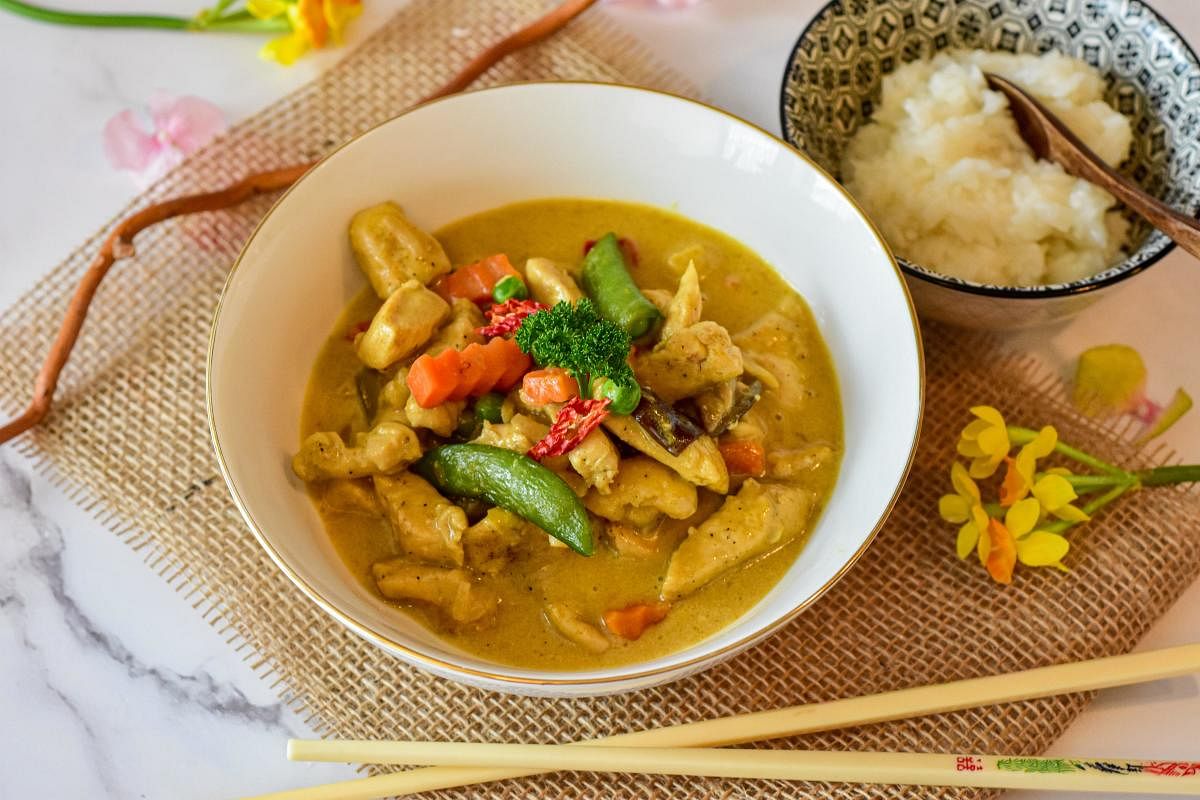
The whiff of fresh basil, ginger, lemongrass concoction with wok-flipped, stir-fried, steamed deep-fried or quick-tossed food entices one’s cravings for Thai food. I remember my friend, the famous Thai chef Paithoon Pan, would greet me with Gin Khao Yung? which means “have you eaten yet?” or in other words “have you eaten rice yet?” rather than “how are you today”?
Thai cuisine is a very good balance of fiery hot, tangy a little sour, salty, bitter and sweet notes. But the fact remains that the heat quotient is not inherent but can be attributed to the Portuguese who brought chillies, much like potatoes and tomatoes got introduced to Indian cuisine.
Thailand is a culinary melting pot that has evolved into one of the freshest and most beloved cuisines around the globe. The cuisine largely depends on key ingredients like galangal, holy basil, lemongrass, kaffir lime leaves, tamarind and jasmine rice that make it authentic and delicious.
Traditional Thai kitchen takes a seemingly casual approach to compose a meal. Shared items are usually served together on deep plates, arriving on the table more or less at the same time. Stir-fries complement soups and curries and fried and grilled foods are offset with zesty salads and dips. Thai cuisine’s rudimentary flavours are not single notes in Thai cooking, but form a synchronisation, as demonstrated by phad Thai, that is considered the kingdom’s national dish.
The culinary map has indigenous regions having their own complex cooking styles, flavours and unique dishes. The north has a mild cuisine due to a Burmese and Chinese influence that includes Laab salad, Tom kha soup, Khao Niaw sticky rice, whereas the South has an inclination towards spicy food. Some popular dishes here are Mee Gaeng Poo — crab curry noodles or Nam Prik Goong Siap — spicy shrimp dip.
The north prefers steamed glutinous rice to the soft-boiled rice of the central region and curries tend to be thinner, without the coconut milk and cream that is widely used in central and southern cooking.
In the South, seafood dishes are highly popular and the richness of coconut is tempered with sour fruits and hot chillies. Central Thailand prefers the more fragrant variety as it is home to a royal cuisine. Traditional Thai cuisine repertoire is roughly categorised into Tom as Soups or boiled dishes, Yam as spicy salads, Tam as pounded foods, and Gaeng as curries. Deep-fries, stir-fries, and steamed dishes are derived from Chinese cuisine but are very popular and have become a part of Thai indigenous cuisine like Pad Pak Ruam Mitr — stir-fried mixed vegetables.
Thai desserts are usually made of rice flour, sugar, and coconut while sweet potato, taro, and water chestnut are added to some desserts.
Boasting an exciting street food culture, the most popular dishes here are Guay teow, or noodle soup, Pad Thai, Phad sew noodles, Guay Teow — fried chicken, Poh pia — the spring rolls, Thai curries with rice and the most popular Payaya Salad-Som Tam.
Known for its assorted curries, Thailand has a variety of curries that are made with a base of coconut milk and had best with rice, more known by its colour as green, red, yellow, Massaman and Penang. Green curry being the hottest, Massaman is very close to the Indian taste buds as it has some Indian spices. In Thailand, sharing food is a reason to rejoice. With all these wonderful Thai flavours ready to tickle your taste buds, all that’s left for us to say is, enjoy the cuisine!
(The author is an award-winning chef, mentor, maven & master of food & beverage with over three decades of experience in leading world-class hotels & restaurants across the world.)